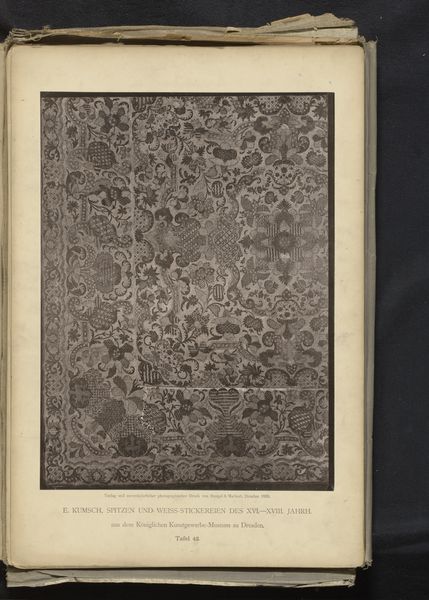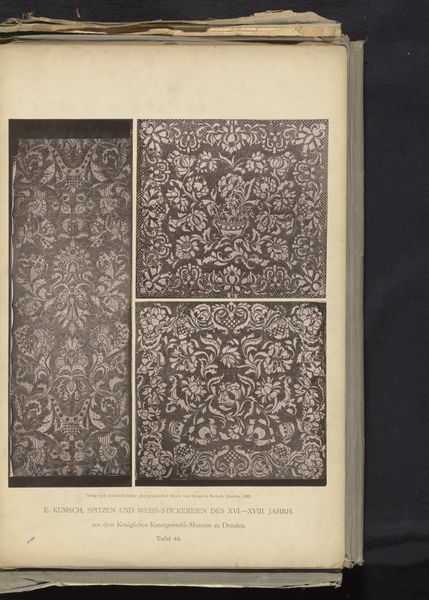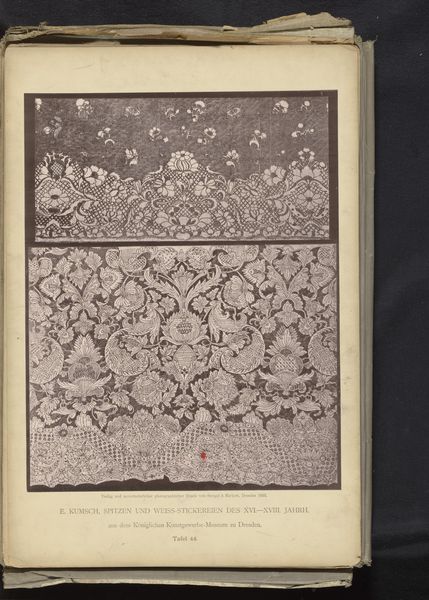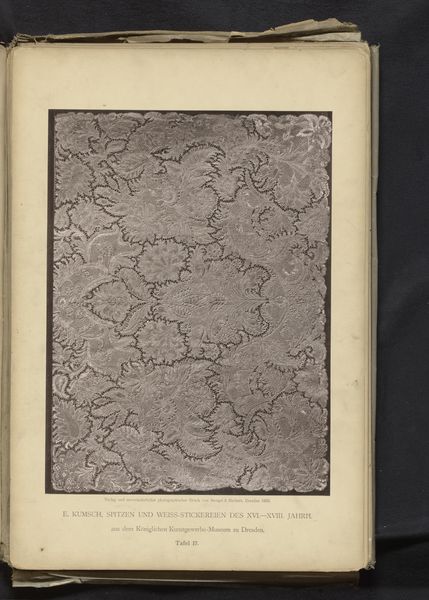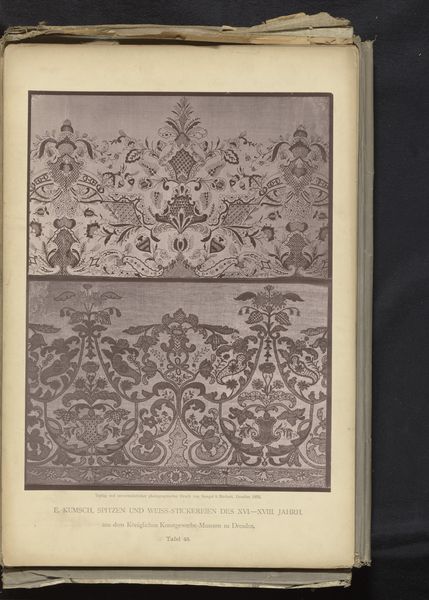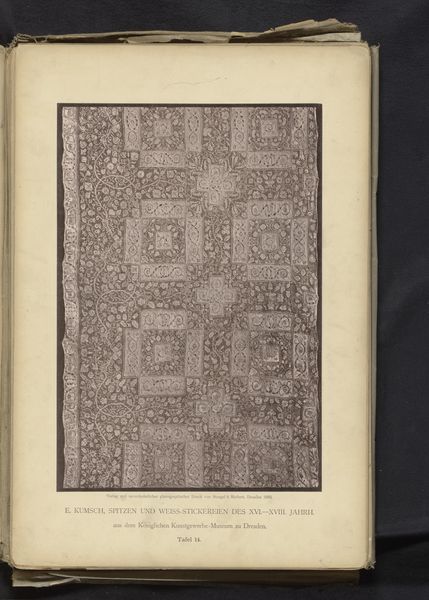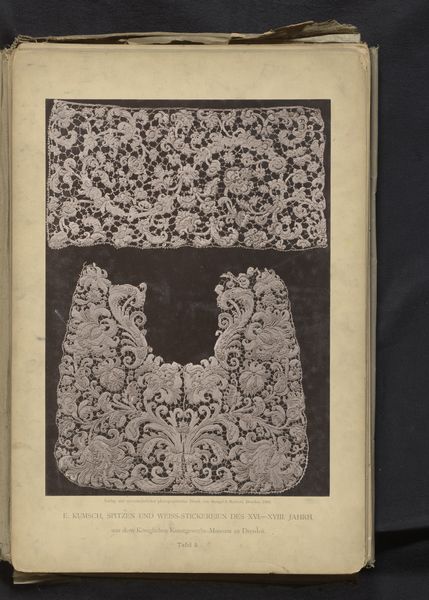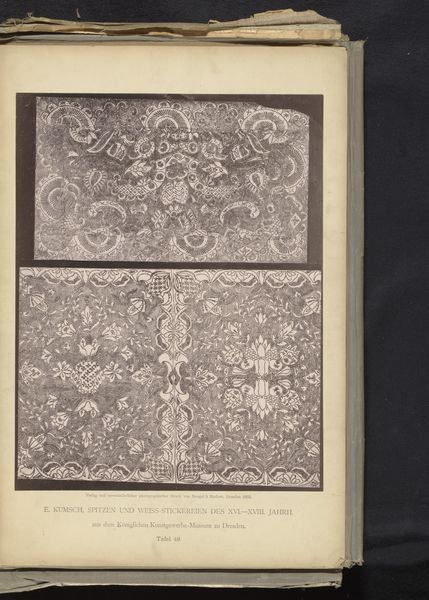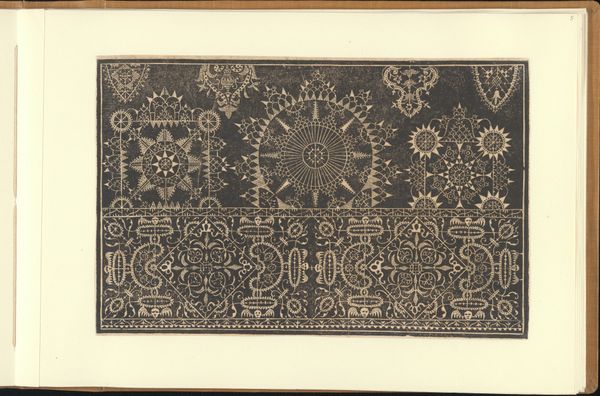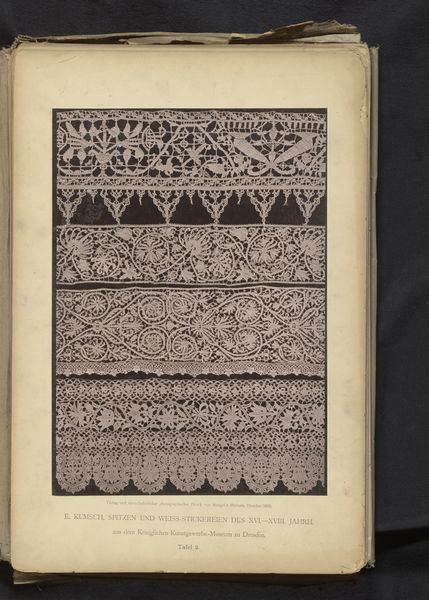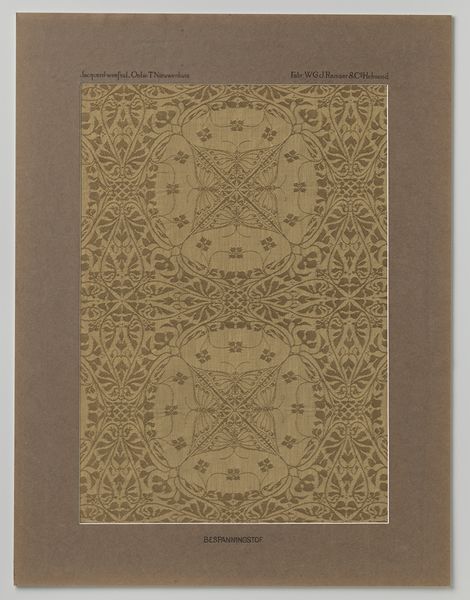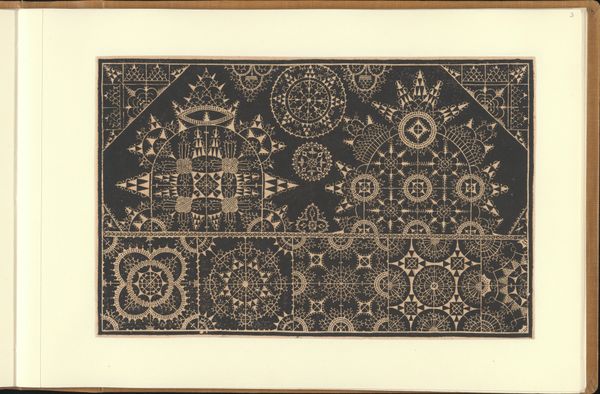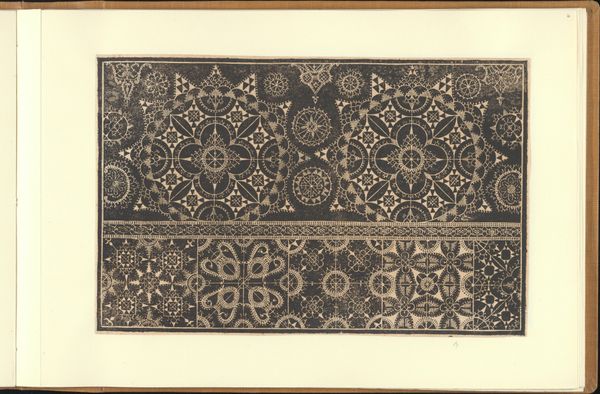
18de-eeuws geborduurd Duits laken uit de collectie van het Kunstgewerbemuseum in Dresden, Duitsland 1888
0:00
0:00
anonymous
Rijksmuseum
graphic-art, print, textile, engraving
#
graphic-art
# print
#
textile
#
decorative-art
#
engraving
Dimensions: height 356 mm, width 277 mm
Copyright: Rijks Museum: Open Domain
This embroidered German cloth from the 18th century, now part of the Kunstgewerbemuseum's collection in Dresden, is a window into a world where nature and artistry intertwine. The composition is abundant with botanical motifs, each bloom and leaf meticulously rendered. The palmettes and rosettes, recurring throughout the textile, resonate with ancient symbols of fertility and renewal, tracing back to Mesopotamian art and finding echoes in Renaissance ornamentation. These designs are not mere decoration; they carry with them centuries of cultural memory. Consider, for instance, the pomegranate motif, its seeds bursting forth—a symbol of prosperity and abundance, seen in ancient Greek art and later in the tapestries of the medieval era. Such motifs act as carriers of emotion, engaging viewers on a subconscious level. These symbols, though rendered in thread, evoke a powerful sense of continuity. The non-linear progression of these symbols has resurfaced and evolved throughout history, creating new meanings in different contexts.
Comments
No comments
Be the first to comment and join the conversation on the ultimate creative platform.
